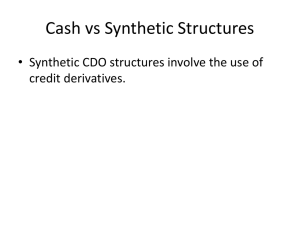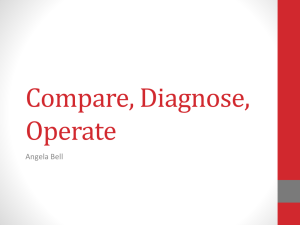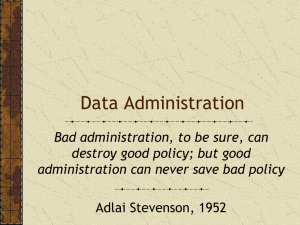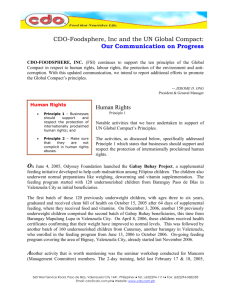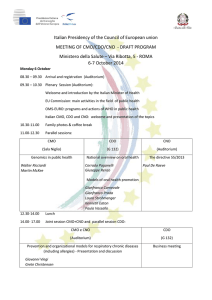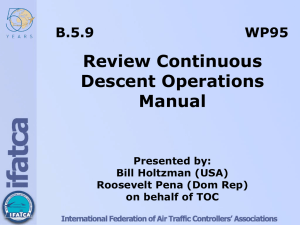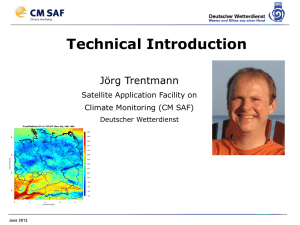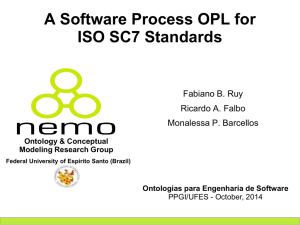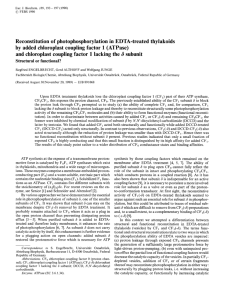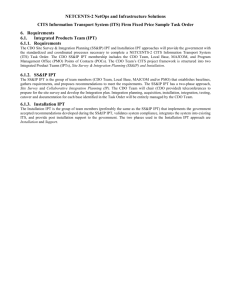ENV01 (ppt) - Eurocontrol
advertisement
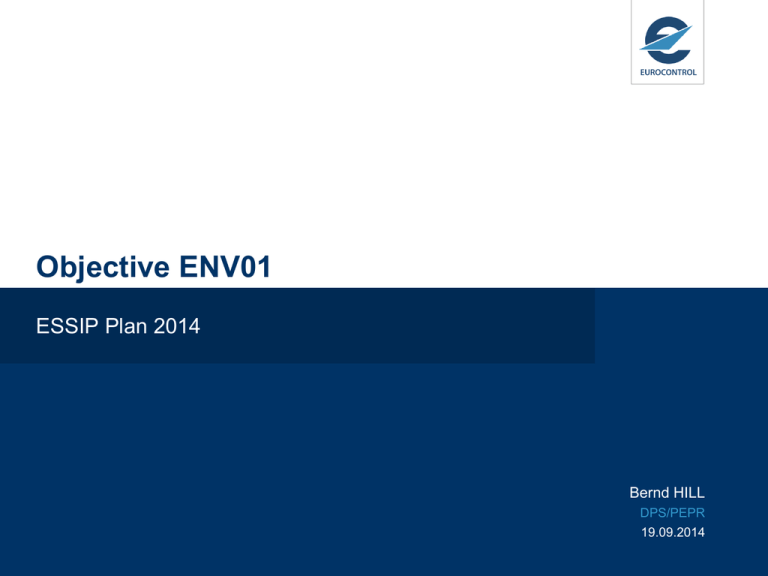
Objective ENV01 ESSIP Plan 2014 Bernd HILL DPS/PEPR 19.09.2014 Explanation The objective aims at implementing Continuous Descent Operations (CDO1) techniques that will produce a number of environmental and cost benefits including reductions to fuel burn, gaseous emissions and noise impact. FOC: 12/2013 1: ICAO uses Continuous Descent Operations (CDO) and replaced the Term Continuous Descent Approach (CDA) with Publication of ICAO Document 9931. ESSIP Plan 2014 / Objective ENV01 2 What has changed since LSSIP 2013 ? The Term CDO replaced the Term CDA in the text The following additional Note was added: Note 2: In principle, it is not required to implement CDO on a 24/7 basis, but is preferable, where applicable. Depending on National legislation and/or National court decisions and/or local constraints at airports, a limited introduction, for example during night time, is considered equally valid. ICAO Doc 9931 - Continuous Descent Operations Manual, Edition 1, dated 31.12.2010 was added as supporting material for the implementation of this Objective. Link to European ATM Master Plan OI step - [AOM-0701]- Continuous Descent Approach (CDA) Description: When applied at an airport, CDA would offer a flexible and simple continuous descent approach technique that does not adversely affect safety and capacity and will produce a number of environmental and cost benefits including reductions to fuel burn, gaseous emissions and noise impact. IOC: 07/2007 FOC: 12/2013 Most important SLoA(s) ENV01-ASP01 To cater for Successful implementation of CDO at designated airport If procedures are not published, do not report progress “Completed” ENV01-ASP02 “Completed” if all approach Controllers at airport are suitably trained and make use of CDO ENV01-APO01 To cater for AOP role in implementation: Support CDO measures, implement monitoring of performance and feedback to ANSP and users where equipment is available. Provide the main link with the local community Finalisation Criteria and Closed Questions (1) ENV01-ASP02 If CDO is implemented, please confirm the period for which you offer CDO to pilots: e.g. Night time only / Day-time only / 24/7 hours/ as traffic density allows / Majority of flights offered a CDO during period of x. If CDO is implemented, what % of total airport approaches (approximatively) are achieving a CDO profile? Select one among 0-20% / 20-40% / 40-60% / 60-80% / 80-100% or provide any more precise figure Finalisation Criteria and Closed Questions (2) ENV01-APO 01 If CDO is implemented, please indicate whether the monitoring results are being regularly reported to all Stakeholders involved: Y/N, and if Y (above) please indicate which type of results (e.g. fuel consumption, noise, emissions)? Note: Monitoring of performance is not compulsory for SLoA Status “Completed”, but is recommended for best practice. If CDO is implemented, what % of Airlines are being active at your airport in applying CDO? Indicate the % of Airlines applying and using CDO Objective’s completion criteria Partially completed: At least, either a CDO design has been approved or a CDO trial has commenced Completed: CDO is established as an operational procedure and procedures are formally published and used in practice. A working arrangement to track performance and seek improvement has been established. ESSIP Report 2013 – Interim Deployment Programme IDP View: From the Airspace Users perspective on CDO implementation it is clear that there is no real CDA when aircraft is vectored, as real CDA needs closed-loop routing. In addition, from Airspace Users viewpoint it would be more appropriate to measure the level of CDO implementation by measuring the percentage of time when the pilot performed the CDO procedure vs total number of approaches. This is because there are many cases where CDO procedures are published but not used during a whole 24h period. Objective Coordinator’s Analysis States should verify that CDO procedures have been published and are in practical use before declaring the objective as ”Completed”. Links and contacts Objective Coordinator: Hill, B. +32 2 729 5058 bernd.hill@eurocontrol.int DNM Objective Expert(s): Faber, C. +32 2 729 9840 christian.faber@eurocontrol.int
